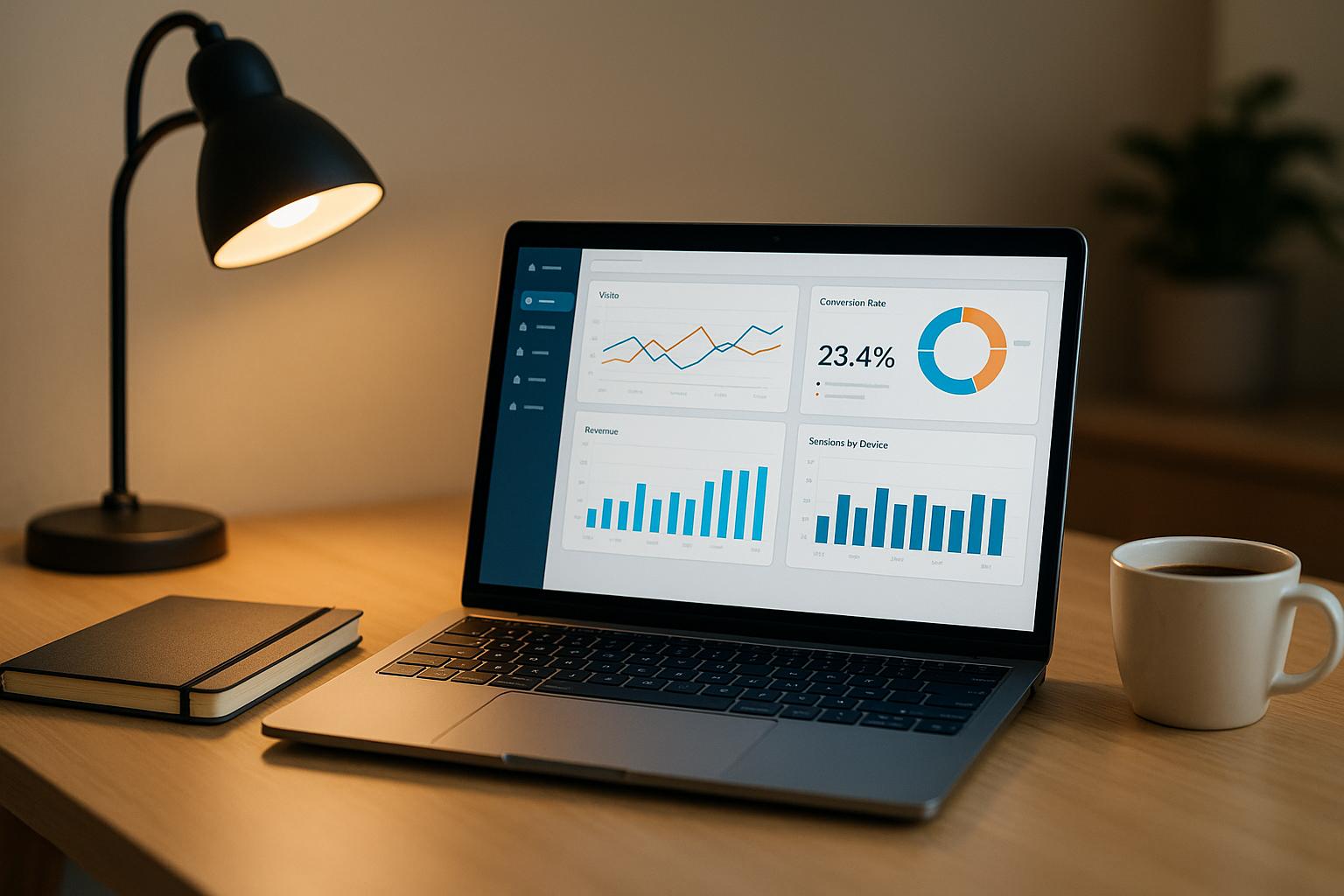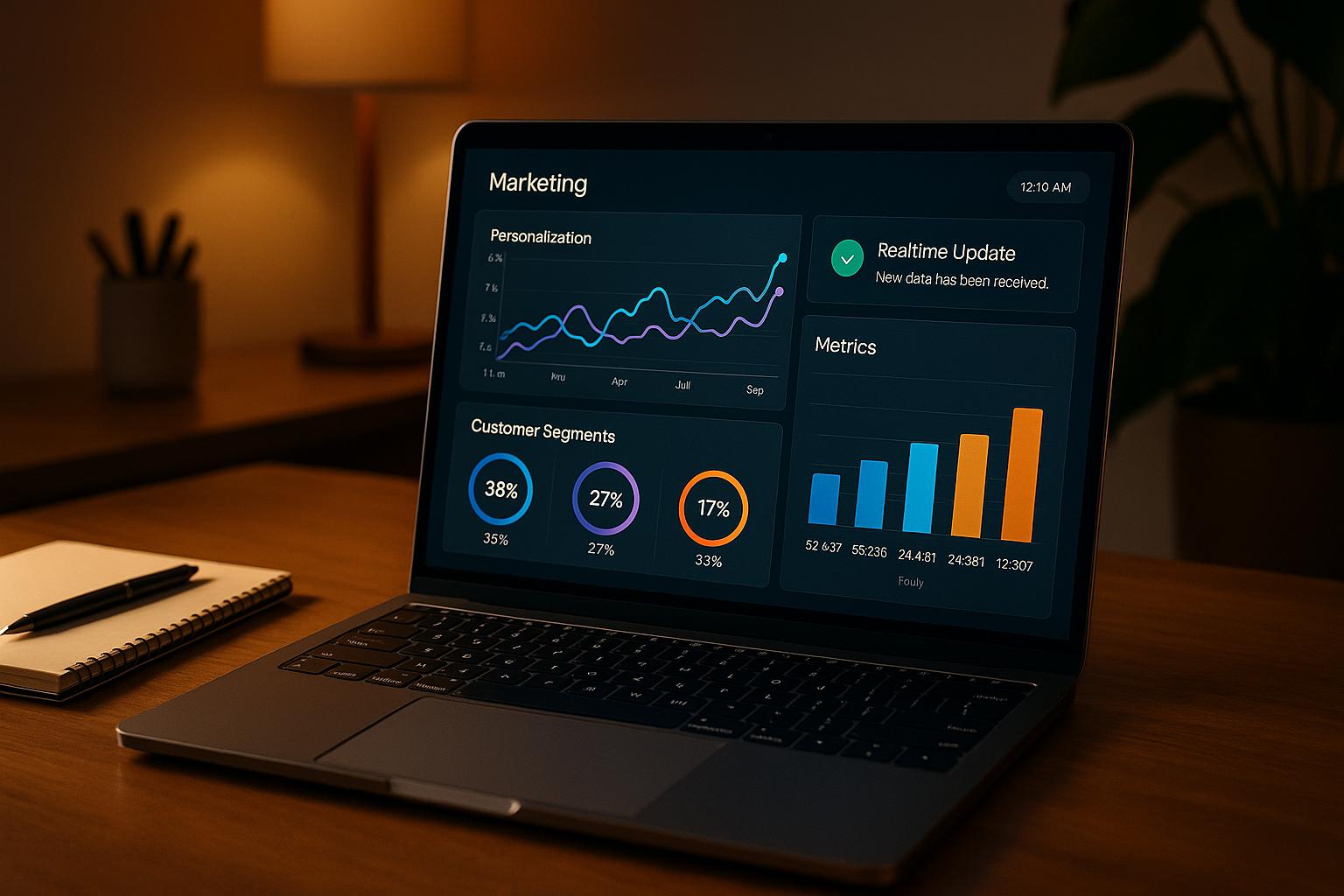B2B drip campaigns are automated email sequences that nurture leads with targeted, behavior-driven touchpoints. They save time, engage prospects consistently, and deliver personalized content at scale.
Key Steps to Build a Drip Campaign:
- Set Goals: Define measurable objectives like open rates or conversions.
- Segment Your Audience: Group leads by industry, role, or buying stage.
- Craft Content: Write compelling subject lines and messages tailored to each segment.
- Automate and Optimize: Use tools for triggers, A/B testing, and performance tracking.
- Adjust Based on Metrics: Monitor open rates, click-throughs, and conversions to refine your strategy.
Examples of Campaigns:
- New Lead Welcome Series: Introduce your brand with a 4-email sequence.
- Mid-Funnel Nurturing: Share insights, testimonials, and product features.
- Inactive Contact Recovery: Re-engage dormant leads with check-ins and exclusive offers.
Focus on clear, purposeful messaging, and regularly tweak your campaigns for better results.
DRIP EMAIL CAMPAIGNS with real-world EXAMPLES (step ...
Steps to Plan Your Drip Campaign
Create a B2B drip campaign by establishing clear objectives, identifying your audience, and crafting a focused content strategy.
Set Clear Goals and Track Metrics
Start by defining specific, measurable goals that align with your overall marketing plan. Monitor key performance indicators like open rates, click-through rates, lead quality, and revenue impact. Once your goals are in place, focus on segmenting your audience for more precise messaging.
Identify and Segment Your Audience
Break down your audience based on factors like industry, decision-maker roles, or unique business needs. This helps you deliver messages that align with their interests and challenges, making your campaign more impactful.
Writing Effective Campaign Content
Write Strong Subject Lines and Messages
Create subject lines that grab attention and encourage readers to open your email by highlighting clear benefits. For example, instead of a generic "April Newsletter", try something like "Cut Manufacturing Costs by 25% with Process Automation." Make sure your messages are tailored to each audience segment to keep them relevant and engaging.
sbb-itb-a84ebc4
Launch and Improve Your Campaign
Pick Your Automation Tools
Select an automation platform that offers features like segmentation, A/B testing, CRM integration, performance tracking, and mobile-friendly options. The Marketing Funnels Directory provides a collection of tools tailored for B2B drip campaigns, making it easier to match your needs and budget.
Here are some important features to consider:
- Segmentation tools for targeting specific audiences
- Workflow builders for creating custom processes
- CRM integration for seamless data management
- Dashboards for tracking campaign performance
- A/B testing to compare different strategies
- Mobile-friendly options for better reach
Once you’ve chosen your platform, set up trigger events to refine your campaign.
Set Email Triggers and Timing
Define triggers based on specific actions, such as visiting your website, downloading content, requesting a demo, abandoning a cart, or signing up for a free trial.
Schedule emails for Tuesday through Thursday during business hours (10 AM–2 PM). For new leads, start with 2–3 days between emails. For nurturing sequences, extend the gap to 7–10 days.
Monitor and Adjust Performance
Keep an eye on these key metrics to measure success:
| Metric | Target Range | Action if Below Target |
|---|---|---|
| Open Rate | 20–25% | Test new subject lines |
| Click-Through Rate | 2.5–3% | Improve CTA placement and wording |
| Conversion Rate | 1–2% | Adjust your offer and landing pages |
| Unsubscribe Rate | Below 0.5% | Reevaluate your targeting and frequency |
Use A/B testing to fine-tune your campaigns. Test one element at a time, such as:
- Subject lines
- Email timing
- Call-to-action buttons
- Content length
- Image placement
For new campaigns, review performance weekly. For ongoing campaigns, check monthly and make adjustments based on the data.
Sample B2B Drip Campaigns
Once you've set your campaign triggers and timing, try these examples to fine-tune your strategy.
New Lead Welcome Series
Use a 4-email sequence over two weeks to introduce and engage new prospects:
| Timing | Content Focus | Key Elements | |
|---|---|---|---|
| Welcome | Day 0 | Introduction | Personalized greeting, value proposition, social proof |
| Educational | Day 3 | Industry insights | Relevant content, downloadable resource |
| Solution | Day 7 | Product benefits | Case study, feature highlights |
| Action | Day 14 | Conversion | Demo offer, consultation booking |
Tailor each email to the lead's industry and past interactions. Keep your branding consistent and include clear calls-to-action to guide recipients.
Mid-Funnel Lead Nurturing
Build trust and encourage conversions with this sequence:
1. Educational Content Email
Send insights, trends, and best practices relevant to their industry. Link to helpful resources from your knowledge base. Space these emails 7-10 days apart.
2. Social Proof Email
Showcase customer success stories and testimonials. Include measurable outcomes achieved by similar businesses in their field.
3. Product Deep Dive
Focus on features that address their specific challenges, using insights from their previous interactions with your content.
Inactive Contact Recovery
Re-engage contacts who haven't interacted with your emails for 90+ days with this targeted approach:
- Check-in Email: Send a "We miss you" message and include a quick survey to understand their current needs.
- Value Reminder: Highlight new features or services introduced since their last engagement.
- Special Offer: Provide an exclusive discount or offer a free consultation to reignite interest.
- Final Notice: Give them a clear choice to re-engage or unsubscribe.
Tip: Segment inactive contacts based on past engagement. For instance, differentiate between those who downloaded resources and those who only opened emails, and adjust your messaging accordingly.
Track these metrics to evaluate your recovery efforts:
| Metric | Target | Action if Below |
|---|---|---|
| Re-engagement Rate | 5-10% | Reassess and improve offer value |
| Survey Response | 2-3% | Simplify survey questions |
| Unsubscribe Rate | Below 1% | Reduce email frequency |
Use these examples as a starting point to shape your campaigns and drive better results.
Conclusion: Next Steps
Running successful B2B drip campaigns requires careful planning, focused content, and regular fine-tuning. These elements set the foundation for strategies that drive results.
To improve your campaigns, take advantage of tools and techniques that align with your goals and audience segmentation. Automation platforms like ActiveTrail, GetResponse, and ConvertPro can help you engage and nurture potential clients more efficiently.
Action Plan:
- Evaluate your tools: Check if your automation software supports advanced features like segmentation and personalization.
- Plan your content: Look for any missing pieces in your content for each stage of the campaign.
- Monitor performance: Keep an eye on open rates, click-through rates, and conversions to measure success.
By following these steps, you can refine your campaigns over time. Whether you're welcoming new leads, guiding prospects through the funnel, or reactivating dormant contacts, the key is to continuously adjust based on what works best for your audience.
For more insights, check out expert resources in the Marketing Funnels Directory to sharpen your funnel strategies and stay updated on drip campaign best practices.


